Recipe Using
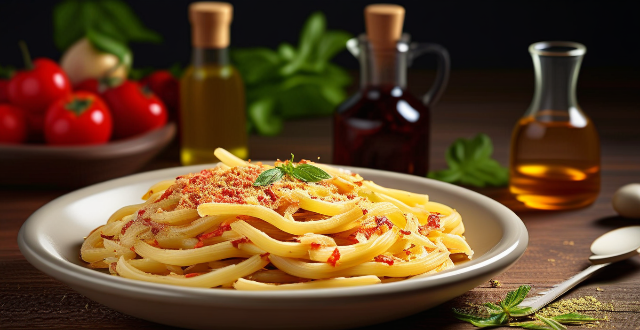
Can you suggest a quick and easy pasta recipe for busy weeknights ?
This quick and easy pasta recipe is perfect for busy weeknights. It requires minimal ingredients like spaghetti pasta, tomato sauce, onion, garlic, olive oil, salt, pepper, and optional grated Parmesan cheese. The steps involve cooking the pasta, sautéing onions and garlic, adding tomato sauce, mixing the pasta with the sauce, and serving with optional Parmesan cheese. This recipe can be customized with add-ins like vegetables, meatballs, or chicken.

How can I improve my pie crust recipe ?
To improve your pie crust recipe, focus on using high-quality ingredients like all-purpose flour and unsalted butter. When mixing the dough, combine dry ingredients first, then cut in cold butter until it resembles coarse crumbs. Gradually add ice-cold water and gently knead the dough until it forms a cohesive ball. Avoid overworking the dough to prevent toughness. For rolling out the dough, chill it first to firm up the butter and prevent shrinkage. Roll out the dough on a lightly floured surface to an even thickness of about 1/8 inch. Carefully transfer the rolled-out dough to your pie plate, trim excess, and crimp the edges as desired. Blind bake single crust pies by pre-baking with pie weights or dried beans for 15-20 minutes at 375°F before adding the filling. For double crust pies, brush the top crust with an egg wash for shine and seal cracks or gaps. Cut small slits in the top crust to vent steam during baking. Bake at the specified temperature (usually between 350°F and 375°F) and check for doneness by inserting a knife into the center of the filling; if it comes out clean, the pie is ready. Allow it to cool completely before slicing to avoid a runny filling.

What are some tips for beginners in baking ?
Baking is a rewarding hobby that can bring joy and delicious treats to your life. Here are some tips to help beginners get started: 1. Read the recipe thoroughly before starting. 2. Use the right ingredients, fresh and as specified in the recipe. 3. Prep your ingredients beforehand. 4. Follow the recipe steps carefully. 5. Practice patience during the baking process. 6. Learn from your mistakes and keep practicing.

What are some healthy and low-calorie recipes for weight loss ?
Weight loss is a common goal for many people, but it can be difficult to find healthy and low-calorie recipes that taste good. Here are some healthy and low-calorie recipes that you can try: 1. Roasted Brussels Sprouts with Garlic and Parmesan Cheese: This recipe involves trimming and halving 2 cups of Brussels sprouts, mincing 3 cloves of garlic, and combining them with olive oil, salt, pepper, and grated Parmesan cheese before roasting in the oven. 2. Baked Salmon with Lemon and Dill Sauce: This recipe involves placing skinless salmon fillets on a baking sheet and whisking together lemon juice, dill weed, salt, pepper, olive oil, white wine vinegar, honey, and water before pouring over the fish and baking in the oven. 3. Zucchini Noodles with Pesto Sauce: This recipe involves spiralizing or cutting zucchini into noodles using a spiralizer, cooking them in olive oil until softened, adding pesto sauce, salt, pepper, chopped parsley leaves, and freshly grated Parmesan cheese if desired before serving warm.

How do I meal prep for a week using simple home-cooked recipes ?
Meal prepping is an excellent way to save time, money, and ensure that you are eating healthy meals throughout the week. Here's how you can meal prep for a week using simple home-cooked recipes: 1. Plan your meals based on your dietary needs, preferences, and schedule. 2. Shop for ingredients according to your meal plan. 3. Prep your ingredients ahead of time by washing, chopping, and storing them in airtight containers. 4. Cook and assemble your meals into individual portions and store them in meal prep containers. 5. Reheat and enjoy your pre-made meals throughout the week. By following these steps, you can successfully meal prep for an entire week using simple home-cooked recipes.
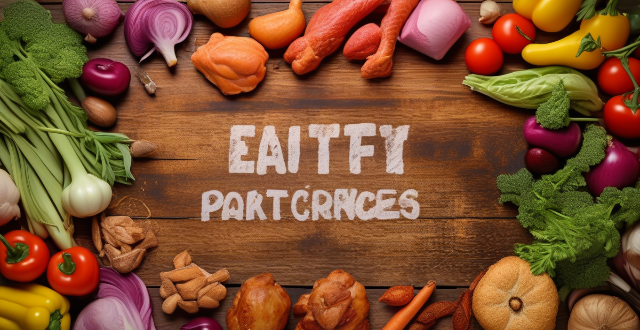
Can you suggest any easy-to-make lunch box recipes ?
The text provides a list of easy-to-make lunch box recipes. The first recipe is for grilled chicken and vegetable skewers, which involves marinating chicken breasts in a favorite sauce, cutting vegetables into large chunks, threading them onto skewers, and grilling until cooked through. The second recipe is for hummus and veggie wrap, which involves spreading hummus on a whole wheat tortilla, adding sliced cucumbers, carrots, and bell peppers, rolling up tightly, and slicing in half. The third recipe is for tuna salad lettuce wraps, which involves mixing canned tuna with mayo, lemon juice, and chopped celery, spooning the mixture onto lettuce leaves, and rolling up. The fourth recipe is for quinoa salad, which involves cooking quinoa according to package instructions, tossing with chopped tomatoes, cucumbers, feta cheese, and a simple vinaigrette, and packing in a container with pita chips or crackers. The fifth recipe is for egg salad sandwich, which involves hard boiling eggs, chopping them up, mixing with mayo, mustard, salt, and pepper, and serving on whole grain bread with lettuce and tomato. The sixth recipe is for Caprese salad, which involves slicing fresh mozzarella and tomatoes, drizzling with olive oil and balsamic vinegar, adding fresh basil leaves, and seasoning with salt and pepper. The seventh recipe is for turkey and cheese roll-ups, which involves laying out slices of turkey and cheese on a slice of bread, rolling up tightly, and slicing into bite-sized pieces. The eighth recipe is for Greek yogurt parfait, which involves layering Greek yogurt, granola, and fresh fruit in a jar or container, and topping with honey or maple syrup if desired. The ninth recipe is for black bean and corn salad, which involves rinsing and draining a can of black beans, mixing with canned corn, diced red onion, cherry tomatoes, and a lime vinaigrette, and serving chilled with tortilla chips or crackers. The tenth recipe is for avocado toast, which involves mashing an avocado with lime juice and salt, spreading on toasted whole grain bread, and topping with everything bagel seasoning or red pepper flakes for extra flavor.

How do professional bartenders measure ingredients for consistency ?
Professional bartenders use a variety of tools and techniques to measure ingredients consistently. Accuracy is crucial for maintaining the same flavor profile and balancing different tastes in cocktails. Efficiency is also important, as it speeds up drink-making and allows bartenders to focus on customer interaction. Jiggers are commonly used tools for measuring both large and small quantities of liquids. Measuring spoons are used for smaller amounts like bitters or syrup. Digital scales are used for precise measurements by weight, especially for ingredients like fruit juices or syrups. Pour spouts and containers help control the flow of liquids to reduce spillage and waste. Standardization processes such as recipe cards, batching, and taste testing are also essential. Recipe cards include detailed measurements for each ingredient, helping new bartenders learn quickly and maintain consistency. Batching involves pre-mixing a large volume of a single cocktail ingredient or an entire recipe, saving time during busy shifts and ensuring uniformity. Taste tests are crucial even with precise measurements, as bartenders adjust recipes based on customer feedback and ingredient freshness. In conclusion, professional bartenders rely on a combination of tools, techniques, and standardized processes to measure ingredients consistently. This ensures that they can replicate the perfect cocktail every time, providing a high-quality experience for their customers.
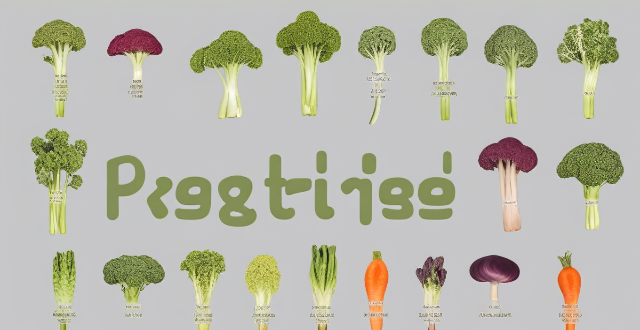
What are some vegetarian recipes that are also gluten-free ?
This text provides three vegetarian and gluten-free recipes that are both nutritious and delicious. The first recipe is for lentil soup, which is a hearty and filling meal. The second recipe is for quinoa salad, which is a great source of protein and makes an excellent base for a salad. The third recipe is for zucchini noodles with pesto sauce, which is a fantastic gluten-free alternative to traditional pasta. These recipes showcase the diversity of flavors and textures that can be achieved on a vegetarian and gluten-free diet.
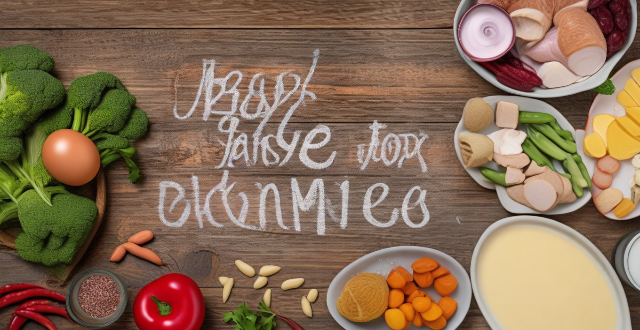
What are some easy and delicious recipes for a family dinner ?
The text provides three easy and delicious recipes for a family dinner: Spaghetti Carbonara, Chicken Stir Fry, and Baked Salmon with Lemon and Herbs. Each recipe includes a list of ingredients and step-by-step instructions for preparation and cooking. The Spaghetti Carbonara recipe involves cooking spaghetti and bacon, making a sauce with heavy cream and Parmesan cheese, and serving it hot with crumbled bacon on top. The Chicken Stir Fry recipe requires stir frying chicken strips, vegetables, and seasonings in a wok or skillet and serving it hot with rice or noodles. The Baked Salmon with Lemon and Herbs recipe involves baking salmon fillets with lemon slices and herbs until cooked through and flaky.

Can you recommend any tasty and healthy low-calorie soup recipes for lunch ?
Here is a topic summary for the text: The text recommends three tasty and healthy low-calorie soup recipes for lunch. The first recipe is Tomato Basil Soup, which is low in calories and packed with vitamins and antioxidants. The second recipe is Carrot Ginger Soup, which is healthy and comforting with a sweet and spicy flavor. The third recipe is Broccoli Cheddar Soup, which is a bit higher in calories but still a healthy and delicious option with a rich and flavorful taste. All three recipes are easy to make and can be enjoyed as a satisfying and nutritious lunch option.
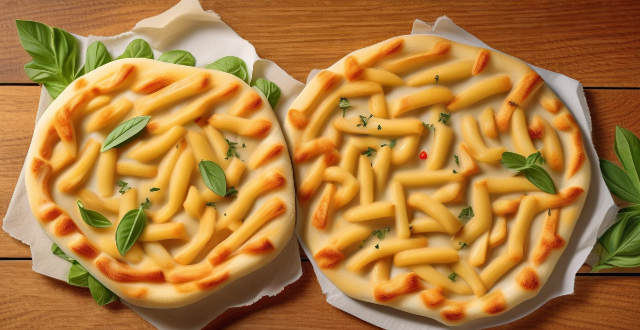
What are the best Italian pasta recipes for beginners ?
The provided text offers two Italian pasta recipes suitable for beginners: Spaghetti Carbonara and Penne all'Arrabbiata. The first recipe includes ingredients like spaghetti, bacon, garlic, Parmesan cheese, and egg yolks, and involves cooking the spaghetti, making a bacon-garlic mixture, and combining everything with a cheese-egg yolk mixture. The second recipe calls for penne pasta, olive oil, garlic, red pepper flakes, crushed tomatoes, salt, pepper, and basil leaves, and consists of cooking the penne, preparing a spicy tomato sauce, and combining them. Both dishes are described as easy to prepare and full of flavor.

Can you suggest some festive recipes for Christmas dinner ?
The text provides various festive recipes for Christmas dinner, including main courses such as roasted turkey and honey-glazed ham, side dishes like garlic mashed potatoes and green bean casserole, and desserts including pumpkin pie and gingerbread cake. Each recipe is accompanied by a list of ingredients and step-by-step instructions for preparation.
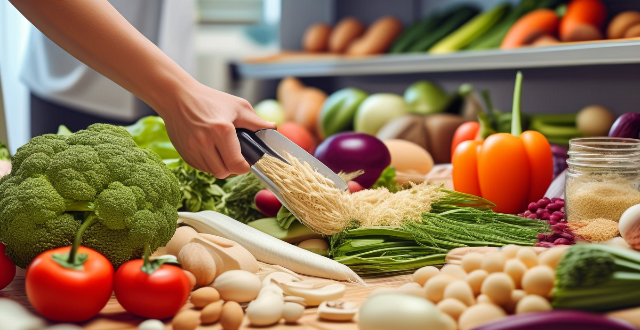
How can I make a delicious and nutritious dinner using only pantry staples ?
In this article, we explore how to make a delicious and nutritious dinner using only pantry staples. Key ingredients include grains like rice and pasta, proteins such as canned beans and nuts, and vegetables like canned tomatoes and dried herbs. We provide steps for creating a balanced meal, including choosing a grain, adding protein, boosting flavor with herbs and spices, incorporating vegetables, and serving the finished dish. An example recipe for a quick and easy rice and beans bowl is also included. Overall, this article offers practical tips and ideas for whipping up a satisfying meal without needing to go grocery shopping.

What are the benefits of using hidden features in iOS ?
The text discusses the benefits of using hidden features in iOS, including enhanced user experience, increased efficiency, access to experimental features, troubleshooting and problem-solving, and advanced customization. However, it also warns that using these features should be done with caution as they may not work as intended or could potentially cause issues with the device if not used properly. It is recommended to research and understand the feature thoroughly before enabling or using it, and to back up important data before making any significant changes.

How can I use bitters to enhance my cocktail recipes ?
Bitters are a crucial ingredient in many cocktails, adding depth and complexity to the flavors. Here's how you can use them to enhance your cocktail recipes: Understanding Bitters: Bitters are concentrated alcoholic extracts made from herbs, spices, fruits, and other botanicals. They are typically used in small amounts to add a subtle, aromatic flavor to cocktails. There are several types of bitters available, each with its own unique flavor profile. Using Bitters in Cocktails: Here are some tips for using bitters in your cocktail recipes: start small, experiment with flavor combinations, use as a garnish, and create your own bitters. Overall, using bitters is an easy way to elevate your cocktail game and create unique, complex flavors that will impress your guests.

What are some common mistakes people make when baking cookies ?
Baking cookies is a beloved pastime for many, but it can also be fraught with pitfalls. Here are some common mistakes people make when baking cookies: Not measuring ingredients accurately using volume measurements instead of weight, incorrect use of measuring tools, not sifting dry ingredients, overmixing or undermixing the dough, handling the dough too much, not preheating the oven, not using an oven thermometer, placing cookies too close together, using inferior quality chocolate or nuts, substituting ingredients without adjustment, not bringing eggs and butter to room temperature, underbaking or overbaking, not rotating the cookie sheet, baking at the wrong temperature, storing cookies improperly, and not considering shelf life. By avoiding these common mistakes, you can elevate your cookie game and enjoy consistently delicious treats every time you bake.

How can I stay safe while using mobile banking apps ?
The text provides a detailed guide on how to ensure the safety of personal and financial information while using mobile banking apps. It suggests downloading apps from official app stores, keeping them updated, setting up multi-factor authentication, using strong passwords, being cautious with public Wi-Fi, monitoring account regularly, not saving log-in details, and being wary of phishing scams. These measures can significantly enhance the security of mobile banking activities and protect financial information from potential threats.

How do I take stunning landscape photos using my iPhone ?
To take stunning landscape photos using your iPhone, focusTo take stunning landscape photos using your iPhone, focus the rule of thirds and play with perspectives, and mind details such as color palette and moment timing. Post-process with editing apps and accessories like a tripod or external lenses for improved results.
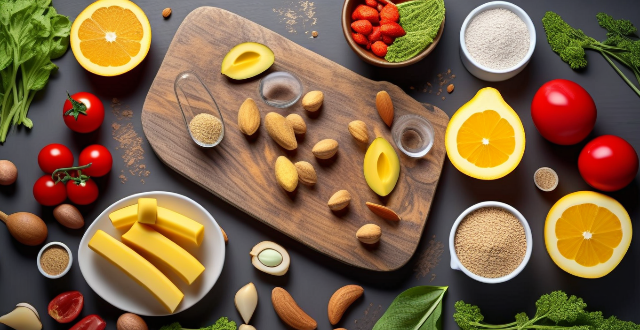
What are the benefits of using a personalized nutrition plan from a health management app ?
Using a personalized nutrition plan from a health management app offers benefits such as improved nutritional intake, weight management, reduced risk of chronic diseases, better mental health, increased variety in diet, convenience, and accountability.

How can I stay motivated while using online learning resources ?
To stay motivated while using online learning resources, oneTo stay motivated while using online learning resources, one create a study plan, find By following these tips, one can make the most of their online learning experience and achieve their desired outcomes.

Can using certain feminine hygiene products cause infections or irritation ?
"Can Using Certain Feminine Hygiene Products Cause Infections or Irritation?": This article explores the potential risks associated with using various feminine hygiene products, including infections and irritation. It provides tips on how to prevent these risks by choosing appropriate products, practicing good hygiene, and consulting a healthcare provider if necessary. The article emphasizes the importance of using these products correctly and mindfully to maintain personal hygiene without compromising one's health.

What is the significance of using chopsticks in Chinese dining etiquette ?
Using chopsticks in Chinese dining etiquette is significant for various reasons, including respect for tradition, table manners, hygiene, fine motor skills, and social interaction. Chopsticks have been used in China for thousands of years and symbolize harmony, balance, and unity. Proper use of chopsticks demonstrates good table manners and avoids certain taboos associated with their usage. Using chopsticks also helps maintain cleanliness at the table by avoiding direct contact with hands to mouth and allows multiple people to share dishes without directly touching the food. Mastering the art of using chopsticks takes practice and patience, demonstrating dedication to learning about Chinese culture and customs. Proper chopstick etiquette facilitates smooth social interactions during meals and creates a shared dining experience among guests.

What are the risks associated with using public Wi-Fi networks ?
Using public Wi-Fi networks can expose you to various risks and vulnerabilities, including Man-in-the-Middle attacks, unencrypted data transmission, malware distribution, phishing scams, insufficient security measures, lack of privacy, session hijacking, and denial of service attacks. To protect yourself from these risks, it is essential to take precautions when using public Wi-Fi networks, such as using a virtual private network (VPN), avoiding sensitive activities like online banking or shopping, and keeping your device's software up-to-date with the latest security patches.

How can I create an effective window cleaner without using alcohol or ammonia ?
In this guide, we discussed the steps to create a homemade window cleaner that is safe, non-toxic, and environmentally friendly without using alcohol or ammonia. The ingredients needed for this solution are white vinegar, distilled water, lemon juice, liquid soap (preferably natural and biodegradable), and a spray bottle. To make the solution, mix 1 cup of distilled water, 1/4 cup of white vinegar, 1 tablespoon of lemon juice, and 1/2 teaspoon of liquid soap in a spray bottle. Shake the bottle well to ensure that all the ingredients are mixed thoroughly. Test the solution on a small area first before using it on all your windows. Apply the solution onto the window surface and wipe it off with a clean, lint-free cloth or paper towel. Use a circular motion to avoid leaving streaks. Dry the windows completely with a dry cloth or paper towel. Some tips to keep in mind while using this solution are to use a microfiber cloth for best results, avoid cleaning windows in direct sunlight, use a soft-bristled brush for stubborn stains, and store the solution in a cool, dark place to prolong its shelf life. By following these simple steps, you can enjoy clean and streak-free windows while also being environmentally conscious.

What are the benefits of using a makeup palette for a quick look ?
The text discusses the advantages of using a makeup palette for a quick look, highlighting its convenience, time-saving features, versatility, cost-effectiveness, customization options, space-saving benefits, and hygiene. It emphasizes that makeup palettes are compact, all-in-one solutions that can streamline beauty routines, offer pre-designed looks, and allow for mix-and-match creativity. They often provide better value than buying products individually, reduce waste, and can be customized or refilled. Palettes also save space, declutter vanities, and are easier to clean, maintaining hygiene levels. Overall, using a makeup palette enables achieving a quick, polished look with minimal effort.

What are the benefits of using a virtual private network (VPN) for online privacy ?
The text discusses the benefits of using a Virtual Private Network (VPN) for online privacy. It highlights five key benefits: encryption and security, anonymity and privacy, unrestricted access to content, protecting personal information, and avoiding bandwidth throttling. The text explains that a VPN encrypts internet traffic, making it difficult for hackers or third parties to intercept data. It also masks the user's IP address and physical location, making it harder for websites and advertisers to track online activities. Additionally, a VPN can bypass geo-restrictions and censorship, allowing users to access blocked content. Finally, a VPN can protect personal information from being leaked or stolen and prevent ISPs from throttling bandwidth. Overall, using a VPN can provide several benefits for online privacy.

Is it possible to read a book in one day using speed reading techniques ?
Speed reading is a technique that allows you to read faster than your normal reading speed. While it can be helpful for quickly reviewing material or getting an overview of a topic, it may not be suitable for all types of books. The pros and cons of speed reading are discussed, as well as tips for effectively using this technique. Ultimately, the decision to use speed reading should be based on personal preferences and goals, as well as the type of book being read.

What are the benefits and drawbacks of using drones for filming and broadcasting sporting events ?
Drones offer a unique perspective for filming and broadcasting sporting events, enhancing the viewing experience and saving costs. They are versatile and can provide real-time updates during live broadcasts. However, safety concerns, privacy issues, technical difficulties, and legal restrictions must be considered before using drones in this context.

Is there a way to check which apps are using the most battery power on my iPhone ?
The text provides a step-by-step guide on how to check battery usage on an iPhone, identify high battery-consuming apps, and take action to save battery life. It includes accessing the battery usage information in the Settings app, identifying apps that consume more power, and taking measures such as closing unused apps, turning off background app refresh, reducing screen brightness, and using Low Power Mode to conserve battery.

How do I make a quick and satisfying sandwich ?
How to Make a Quick and Satisfying Sandwich A sandwich is an easy meal that can be customized in many ways. Here are some steps for making a tasty sandwich: Ingredients: - Bread (any type) - Meat (ham, turkey, chicken, etc.) - Cheese (any type) - Lettuce - Tomatoes - Onions - Condiments (mustard, mayonnaise, ketchup, etc.) Steps: 1. Toast the bread slices until lightly browned for a crispier texture. 2. Add cold cuts like ham or turkey, or grilled meat if preferred. 3. Place a slice of cheese on top of the meat. 4. Add lettuce, tomatoes, and onions for flavor and crunch. 5. Apply condiments like mustard, mayonnaise, or ketchup on the other slice of bread. 6. Assemble the sandwich by placing the second slice of bread on top and gently pressing down. 7. Cut the sandwich in half using a sharp knife or pizza cutter. 8. Enjoy your sandwich with chips, fruit, or a side salad for a complete meal. Use fresh ingredients and be creative with toppings to make your perfect sandwich recipe!